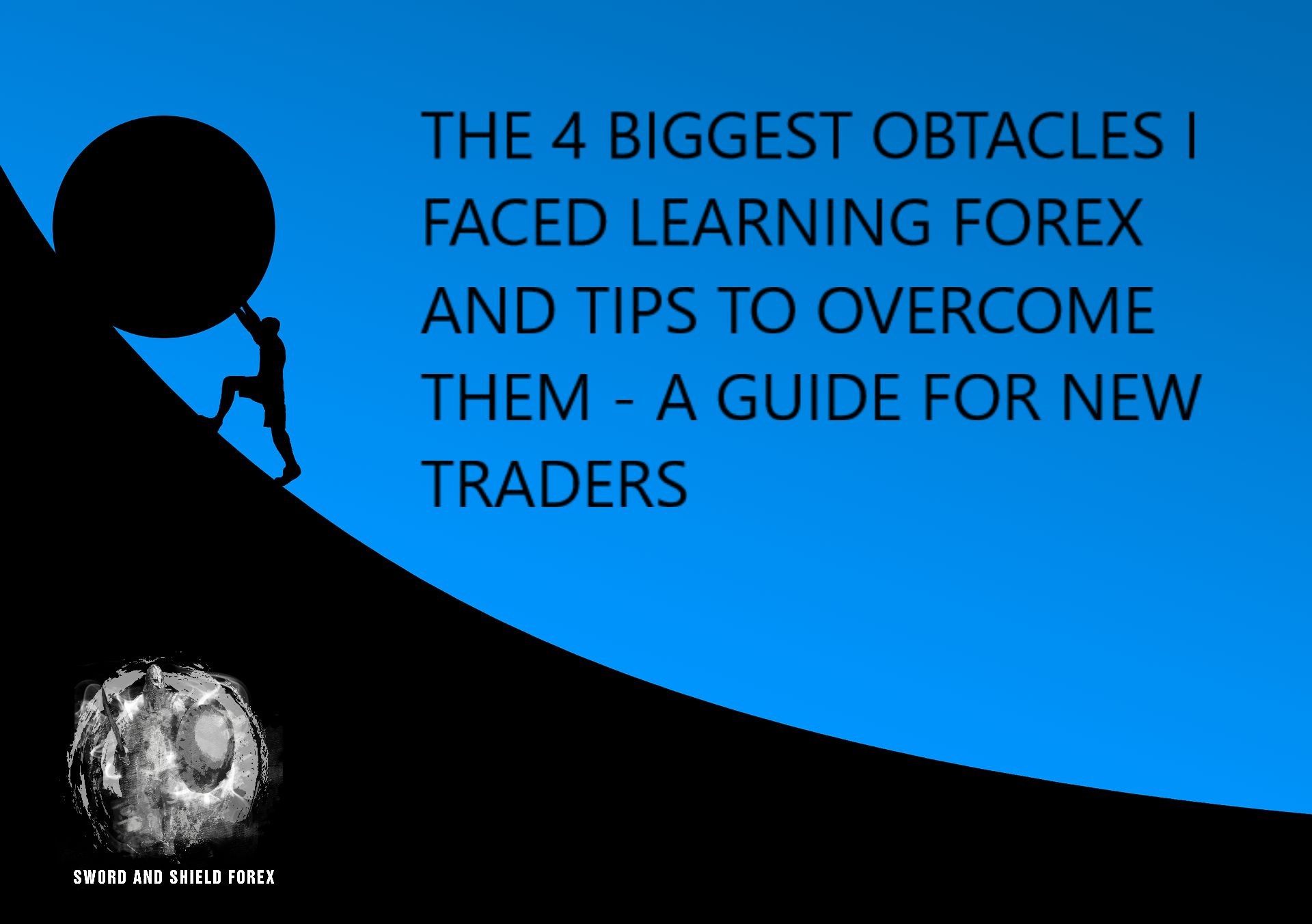
This is certainly a very elementary article but some of these issues consumed considerable time and resources to overcome, so I hope that in writing this it may somewhat lessen the severity of the learning curve for those who are just beginning their FX journey.
1. Is the retail Forex market a scam?

This may seem somewhat trivial but I wrestled with this question for longer than I’d like to admit. The problem stemmed from the fact that if you’ve spent even a small amount of time researching Forex trading you’ll undoubtedly get an uneasy feeling that the retail landscape is riddled with nothing but snake oil salesmen (or saleswoman) preying on one newbie after another. Moreover, I couldn’t find one trainer/mentor/guru that would produce a verifiable track record. When I reached out to someone to try to get the “inside scoop” often they would be selling something so I felt they also couldn’t be trusted.
I began to wonder if anyone was actually able to become a successful independent trader or if the only way to earn an income from Forex Trading was to offer services/products to new traders.
What I came to understand was informational resources in this field are riddled with an absurd amount of misinformation, deception, and flat out scams. However, there are gradients of deception which are important to distinguish.
There is indeed a large number of individuals that are flat out scam artists and are primarily after your money by any means possible: repackaging unsuccessful strategies, losing EA’s, bad signal subscriptions etc… These come in many different packages and it is critical to always be cautious and keep your guard up.
As for trainers/mentors, some are ex-traders that may have not excelled at trading but with the legwork they have put in they have found that they do have something valuable to offer others. They are knowledgeable and are able to pass some of that knowledge on to their students. They talk the talk but don’t walk the walk. Nevertheless, they may be poor traders but excellent teachers and hopefully their students might apply the lessons and techniques better than their trainers have.
Next there are the “full monty” educators – they walk the walk and talk the talk. However, some may not provide any evidence of them being successful trading – which I’ve always found suspect. Yet I now understand that there may be several reasons they cannot make their track records public. For example, regulations sometimes may impose restrictions on whether a trader can hold themselves out to the public as a CTA – see CFTC exemption 4m(1) here.
Tips and Takeaways
The FOREX industry is riddled with misinformation, scams and bogus opportunities all designed to take your money. If after some research about the FOREX market and opportunities you have an uneasy feeling about the potential for success in this field as I did, rest assured, IT IS POSSIBLE to trade Forex successfully.
• Always keep your guard up!
• When evaluating a service or product, do your homework to make sure you are signing up for a legitimate service. Remember, even comments/reviews can be easily falsified.
• If it sounds too good to be true, it probably is.
• If you are considering an educator ask if they have traded and if they are currently trading. Then ask for their record. If they won’t produce it ask why. Often there will be a good reason; however, if they don’t offer a good reason, move on.
• http://www.forexpeacearmy.com/ is a reliable website for reviews of all things FOREX.
• @Guruleaks1 Twitter Account is helpful to spot scams
• Find successful traders you trust and talk to them.
2. Coming to grips with what it really take for success.

Naturally, if your primary exposure to FOREX is through websites and people wanting to sell you something, you will walk away with a distilled version of what it really takes to be a successful trader. They want you to buy their product not scare you away.
Many of these sales people are also exceptional marketers so unfortunately their materials will be more readily available and widespread on the internet. As a result, someone may feel they have done an adequate amount of research on trading FOREX but through their exposure to these individuals/websites they are left with unrealistic expectations.
At this stage wannabe traders take a few different paths. Generally all lead to failure, except one.
There are those who swallowed the pill in entirety and jump in the deep end. They mistakenly believe that fortunes can be easily achieved by buying an EA, indicator or strategy, for example.. Unfortunately, these folk are quickly and painfully humbled by the market.
The next group is more practical. They are aware of the scams and carefully avoid them. They are aware of the stats that most new traders fail and realize that some effort will be required on their part to develop their own strategy. They take it seriously and quickly build confidence about their readiness to trade. Unfortunately, their confidence isn’t properly vetted with real market exposure and they grossly overestimate their preparedness to succeed. They move far too quickly and Mr Market takes another round of victims.
So what approach works? What does it really take for success?
The final approach is slightly more grounded in reality. These traders understand that this isn’t a get rich quick pursuit – this is a skillset that will require considerable effort for mastery. These aspiring traders approach cautiously and systematically, developing their skillset and strategically applying it to a personal system that is carefully vetted in demo accounts. They continue to learn, improve and test their strategies until they finally take their systems live. They understand that trading is difficult and they respect the learning process. They understand that their success depends not only on mastering trading, but mastering themselves too. They set course and dive in, fully. This is the camp you want to be in.
Tips and Takeaways
Save yourself a lot of potential pain (and money) and don’t begin this pursuit without fully understanding what it will take for success. Just like any new skillset or career path there is a process and learning curve. Although the learning curve can be somewhat tweaked, overall, most shortcuts beget failure or at a minimum limit your performance and potential success.
• If you’re under the impression trading is easy or a get rich endeavour – determine which informational sources led to those beliefs and take it as an indication that their intentions are likely not genuine.
• If you believe you can become a successful trader quicker than most and with little effort, consider whether you may be experiencing one or more cognitive biases and be prepared for disappointment.
• Accept that this pursuit will take significant time and effort requiring not only the mastery of trading but will also require mastery of “self” by staying mentally fit. If you are not willing to put in the personal work in addition to learning trading skills you might as well abandon this pursuit.
• Set at minimum the following milestones to complete before trading a live account.
o Learn Material and Develop your own unique strategy
o Backtest that strategy for a minimum of 3 years of data (can vary depending on your timeframe)
o Set backtesting metrics in advance that must be achieved to feel confident in your strategy. For example, 3 % monthly with 20% max drawdown.
o If strategy doesn’t achieve those metrics – tweak and repeat testing.
o Once your strategy is finalized, forward test on Demo for MINIMUM of 3 months.
• Understand that learning and performance enhancement is an ongoing endeavour. You will need to continually work on yourself to optimize your strategy and personal performance.
• Finally, remember, if it was easy everyone would be doing it!
3 Okay, I believe successful trading is possible with hardwork – but can you really make money?

Absolutely! Well, albeit with a couple caveats that are almost always glazed over on many informational sources. How much money you make depends on two critical factors.
– You need to be able to trade successfully
– It takes money to make money.
The first requires no explanation. If you can’t generate positive returns you won’t be in the black – simple.
The second caveat requires some fleshing out. How much money you make is a combination of your returns applied to the capital you are working with. Although perhaps some wonder-kid trader is capable of turning his monthly grocery budget into a 3-figure income, in reality, if maintaining a reasonable risk profile, most will generate returns that won’t provide a “get rich quick” opportunity.
So clearly, it takes money to make money. If you have your own capital – excellent. You should ensure that you have enough capital to meet your standard of living costs based on your returns. The math is simple.
Annual Living Expenses * (100/Annual Returns)
For example, assuming an average yearly return of 20% (not an easy task!) and required living expenses of $40,000/year. You would require $200,000 ($40,000 * 100/20). If you meet your capital target, congratulations, you are on your way to financial independence!
For others, you will need capital. Unless you are going to rob a bank you will have to rely on “other peoples money” (OPM). You may come across some who say that if you have a consistent trading record the money will come to you. And this may be accurate (if you get your record out there), but, and a big BUT here, you will need to deal with regulatory hurdles.
Depending on your jurisdiction, these regulatory hurdles to trade OPM can be somewhat mild or flat out crippling. You need to do your research on this one. If you will need to trade OPM, what are your regional regulatory restrictions? Understand this in entirety. What is possible and what will be required to trade OPM.
Tips and Takeaways
Understand your long-term goals and the resources you will need to accomplish them. It takes money to make money so if you don’t have enough personal capital clearly understand in advance what options are available to you and what regulatory hurdles you will face.
• When calculating your required capital be realistic about your potential returns. Many reported on social forums etc… are not verifiable and/or take on far too much risk and will not be sustainable.
• If you don’t have enough capital to trade your own account, fully understand what options are available to you to trade OPM. Contact your local regulatory body to understand what hurdles are in place. Contact other traders in your jurisdiction to see how they have approached the matter.
• Understand your goals, what resources you currently have (or will have), what resources you will need and what steps will be required to obtain them. It may be that you only need to borrow a small about from a family member. It may be that you will require registration in one or more jurisdictions and will require a number of courses and/or firm experience to obtain registration. You may be able to achieve your goals with certain registration exemptions. You may have to move to a more favorable jurisdiction. Etc…
• Do this now – you don’t want surprises down the road!
4. Information Overload – Where to Even Begin?
 Before even placing a trade, I read A LOT of trading books and spent A LOT of time watching price action during every circumstance possible. During different market sessions, news releases, economical data releases, geopolitical events, and on every pair possible.
Before even placing a trade, I read A LOT of trading books and spent A LOT of time watching price action during every circumstance possible. During different market sessions, news releases, economical data releases, geopolitical events, and on every pair possible.
Admittedly, my current market approach draws very little in specific from those trading books and in hindsight, many threw me off on a tangent in my developmental projection. BUT, reading them was certainly not a waste of time. And for that matter, more price action exposure than less is never a bad thing.
You see, you need a certain minimal amount of exposure to market approaches and screen time to develop your strategy. Why? Well, for YOUR STRATEGY to succeed, YOU must believe in every aspect of it. Without adequate exposure and understanding of the markets and methods to exploit it, you will never be able to develop a personal system that you can trade with conviction.
Here was one of my biggest obstacles which I’ll use as an example to illustrate this point. With all the information out there what is the best approach to the market? A fundamental divergence in market approaches that I found pulling me in two different directions and causing inefficient use of my time was that of discretional vs mechanical trading systems.
Discretional trading involves manually executing trades based on chart patterns, fundamentals, market sentiment etc… A mechanical system is usually purely based on some combination of indicators, candle patterns etc…that signal a buy or sell setup.
I spent a lot of time on both approaches. I continued to learn and develop my trading skill set to improve my discretional trading strategy and I also developed and back tested my own mechanical systems. I continued to spend my time being pulled in these two different directions until one day I sat down and went through a process to evaluate what I believed to be the best approach to the markets.
By then I had considerable exposure to both approaches and was able to make an informed decision of which approach was better suited for me. At the time I felt the markets were far too complex and dynamic for a mechanical system to perform in the long run. I had seen the way news, data and themes drive prices and I felt I needed more personal control over the trading rather than handing decision over to a combination of indicators. I also had some experience discretionally trading a demo account and knew that although I needed some work, I was able to keep my discipline and emotions in check. It was a no-brainer decision for me to drop the mechanical system development and put all my eggs in the discretional basket – so to speak.
At the time, the decision was easy, but it was only easy because I had spent the time gathering the data, information and experience to make an informed decision. In the end, I was able to develop a strategy perfectly suited to my personality and beliefs about the market and with that, I was able to trade it with conviction.
Tips and Takeaways
To obtain the necessary information to develop a personal strategy it is important to gain exposure to both the core trading lessons as well as exposure to more niche approaches such as Elliot Wave theory, Harmonics, Intermarket Analysis, Machine Learning, Fundamentals, Point and Figure Charting etc.. – just to name a few. The amount of trading information is astounding so the trick is to balance the essential core educational information with exposure to these other approaches without committing too much time on them early in your education. Getting bogged down on trying to become an expert on some esoteric trading approach only to find down the road it was not “time well spent” is exactly what we are trying to avoid.
Arming yourself with a thorough broad spectrum of information will allow you to make informed decisions on how to focus your resources on subjects that resonate with your beliefs. This in turn optimizes your time by cutting down the learning curve and will also allow you to develop an approach to the market that is tailored to your personality and belief system. A self-tailored strategy is a sustainable strategy that can be traded with conviction.
The importance of this cannot be overemphasized.
Skipping this process can not only result in wasted time but ultimately in a lack of confidence in your strategy. This results in continually abandoning strategies/approaches looking for “greener pastures” or even worse, blowing your account.
I suggest the following approach. It’s about achieving a balance between exposure to trading basics and a more broad range of trading topics while systematically filtering out information that doesn’t resonate with you.
1. Start with some basic introductory online courses. No need to pay for these as there are many free resources available. You need to master the basics.
2. Then try categorizing trading information into broad sectors and spend some time on each one. No need to become a master in each – that is what we are trying to avoid at this point. At this point you can get exposure to new approaches and dig deeper into some of the basics you have already learned.
3. Get a general familiarity with each topic until you feel you have enough of a grasp of the information to decide whether it clearly resonates with you, clearly doesn’t, or if you are unsure and decide it requires further investigation.
4. Continue until you have progressed through the topics.
5. Once one round is completed, treat it like a funnel. If you can clearly eliminate some topics, that don’t resonate with you, do so. For the topics that sparked your interest or you feel deserve another look, do another round on those topics. Dig a little deeper then continue to eliminate topics until only a few topics come out of the funnel. At the end of the process you should have a very comfortable understanding of how you want to approach the market.
6. Now focus all your attention on applying those topics/approaches into building your own unique strategy.


